It’s been a humid, foggy summer in Maine, one of those summers where you don’t leave the shore without a compass. You need one in fog or if you are doing any open-water rowing. It might be something as simple as a hiking compass tucked into a PFD pocket—a compass that you won’t use to navigate precisely but one that will get you home when the world closes down to 100 yards visibility.
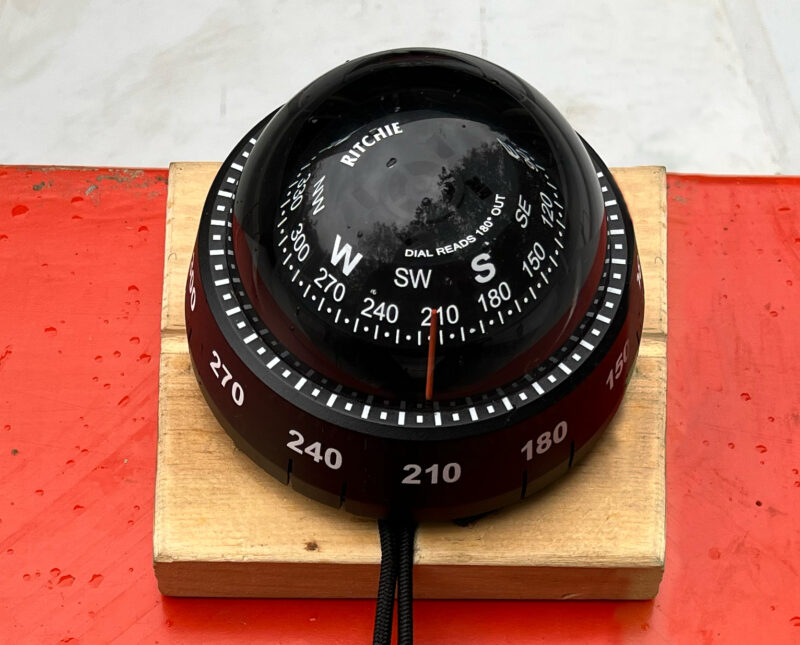 Photographs by the author
Photographs by the authorThe easy-to-read card is printed backward so that a rower, facing aft, can immediately see the heading—no math, no straining to see the far side of the card. The note on the card, “Dial Reads 180° Out,“ alerts users to it’s unusual orientation.
If you want something better, there are lots of compasses available. Some are removable, some want a fixed mount, but almost all of them assume that you are facing forward. If you’re rowing, that poses a problem. To see it as you row, the compass has to be between you and the stern. If you use a regular compass, set or mounted so its lubber line is parallel to the boat’s centerline, you’ll need some math. Adding or subtracting 180 from the number you see on the compass card is easier if you add 200 and subtract 20 if your course is less than 200, or subtract 200 and add 20 for courses 200 and greater.
In the days of flat-card box compasses, you could read your course directly from the card, just by reading the edge that was closest to you, whether you were facing forward or aft. Small ones were sold as dory compasses, part of the standard outfit for fishing on the Grand Banks. You can find them in antique stores, and there are replicas available.
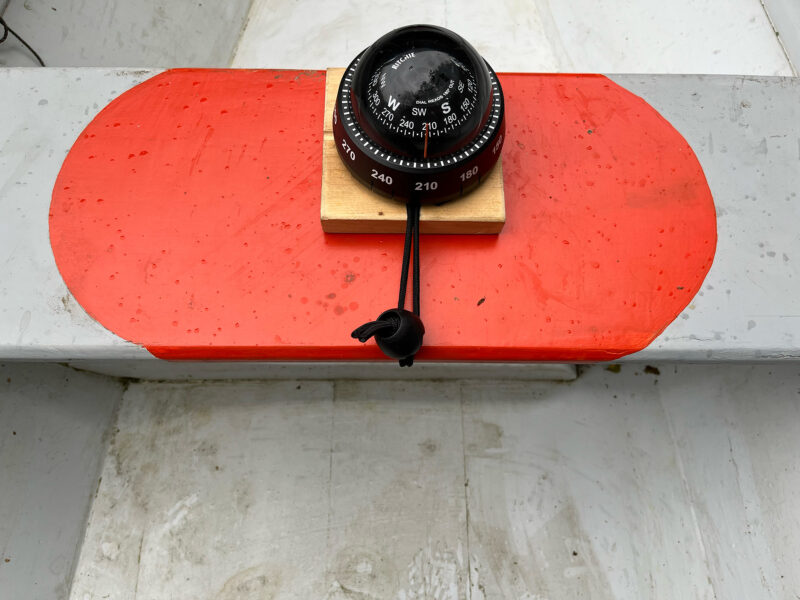
A thwart aft of the rower is the ideal location for the reverse-reading compass. It is mounted on a block that is bungeed to the seat so that it can be removed at will without leaving behind exposed screws on the thwart. Note the bezel has been rotated to 212° to provide a desired heading. The rower holds the course by keeping the compass card at the same reading behind the lubber line. Ritchie calls this feature the CourseMinder.
The Ritchie company, which has been manufacturing compasses of outstanding quality since 1850, makes its reverse-reading Rowing Compass, a modern spherical compass designed for the rower. The card is printed backward so that the lubber line, on the bow-facing side of the compass, indicates the course that you are rowing. Clearly printed on the top of the card is “DIAL READS 180° OUT.” With white marks printed on the black card, it is highly visible, with numbers every 30 degrees and easily legible vertical marks every 10 degrees and, in between them, dots marking the 5-degree increments. The compass is 4 1⁄4″ in diameter and has a 2 3⁄4″ card. Outside of the dome is a movable bezel, Ritchie’s “CourseMinder,” with big numbers mirroring the compass markings. You use it by turning the bezel to set your course under the lubber line, then just steer the boat to match the compass card with the CourseMinder. I find the compass easily readable from 3′ or so away; the ideal distance is a mount below your knees, at your feet, or on a thwart aft of your rowing thwart.
The compass is designed to be removable. Its base has two small keyhole openings and a glued-on layer of foam. The non-magnetic screws to fit the keyholes need to be installed on a line parallel to the boat’s centerline. When you install the compass over the screws it locks with its lubber line in the proper orientation. If you have a place on your boat to mount the compass where you can leave it installed, the screws that hold it won’t be a problem. If, however, you mount the compass on a thwart or floorboards, the protruding screws will catch on you when the compass is removed. I suggest mounting the compass on a block of wood and working out a way to bungee the block to a thwart or add a spline on the bottom to slip into a gap between floorboards.
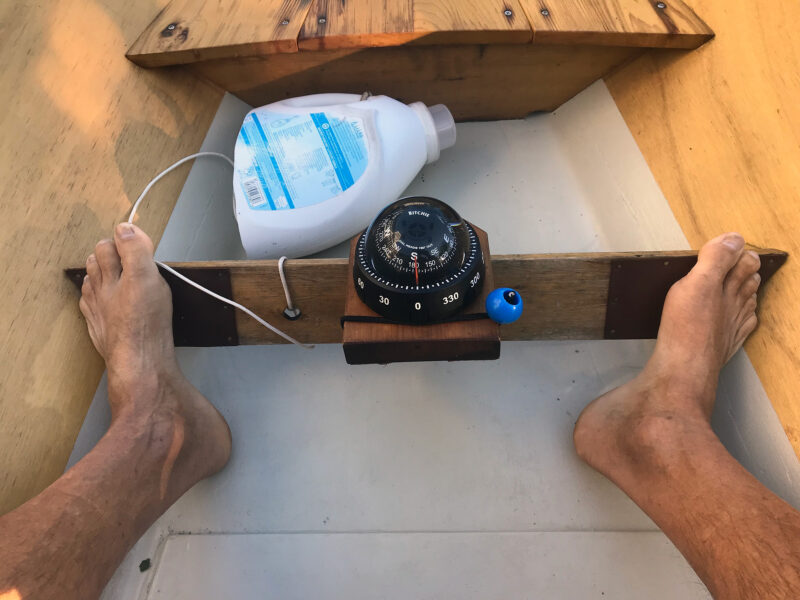 Bob Lombardo
Bob LombardoThere is not always a suitable place to mount the compass—a thwart or floorboard, for example—and even if there is a suitable location, leaving the two mounting screws uncovered when the compass is removed would be a hazard. Here, the compass has been mounted on a triangular block that sets flush to a foot brace. The CourseMinder bezel has not been set for a particular heading. Here, set at 0°, it would be used for rowing north.
If you have neither floorboards nor thwart aft, some creativity will be needed. My friend Bob Lombardo solved the problem in his Gloucester Gull by making a footboard mount using a triangular block as a base to which a wooden compass baseboard is bungeed.
With handheld GPS units common, why a compass? Reliability and legibility. Batteries run out of power at inopportune moments, and I’ve had devices fail from moisture getting into “waterproof” battery compartments. A GPS on a fixed mount can’t be moved to read a small screen in direct sunlight, and a handheld GPS tends to wander about the boat. Compasses, on the other hand, have centuries of unfailing performance behind them and can be read at a glance.![]()
Ben Fuller, curator emeritus of the Penobscot Marine Museum in Searsport, Maine, and former curator of Mystic Seaport and Chesapeake Bay Maritime Museum, has been messing about in small boats for a very long time. He is owned by a dozen or more boats ranging from an International Canoe to a faering.
The Ritchie Rowing Compass is available from Old Wharf Dory Company for $100 and Duckworks for $114.99.
Is there a product that might be useful for boatbuilding, cruising, or shore-side camping that you’d like us to review? Please email your suggestions.
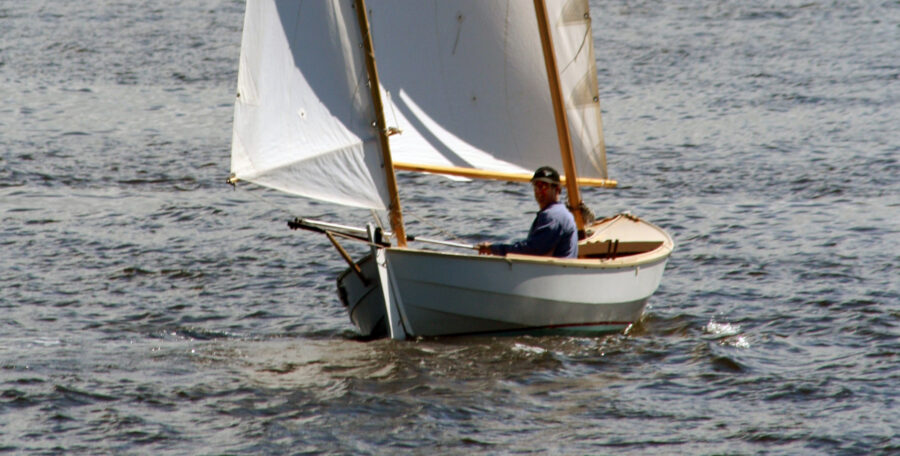
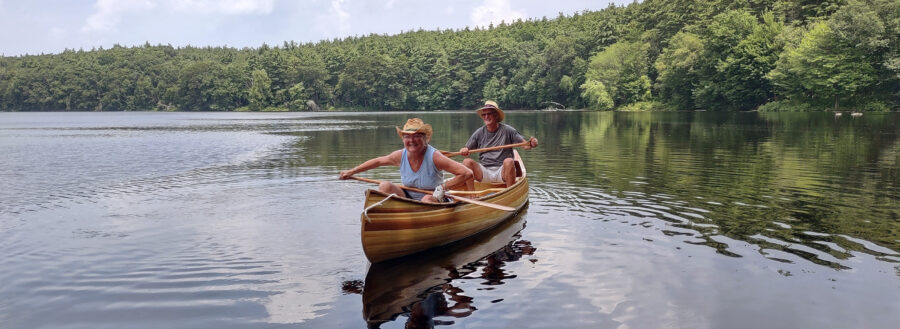
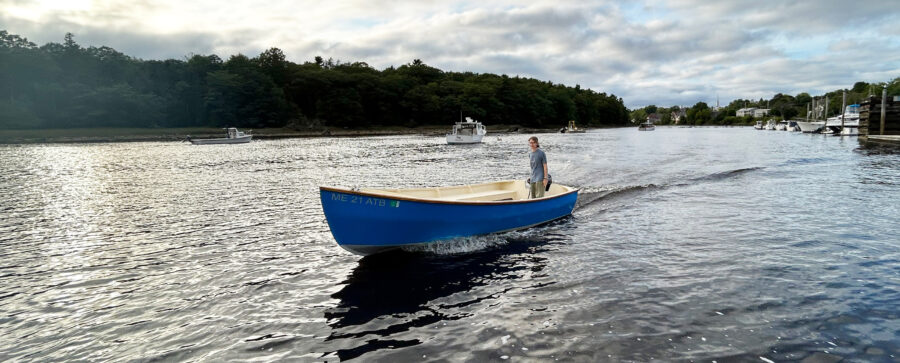
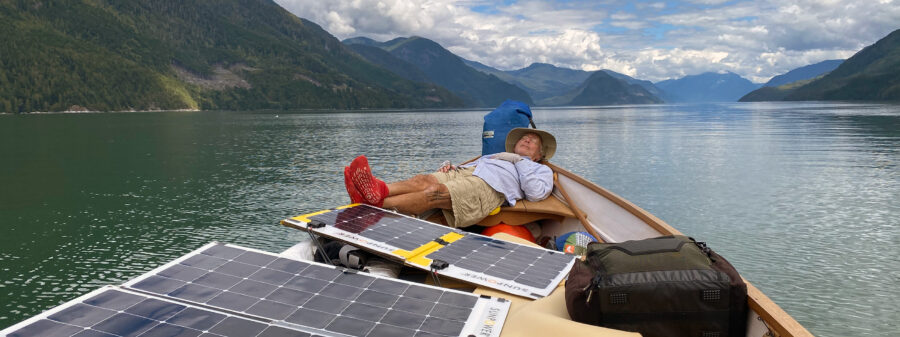
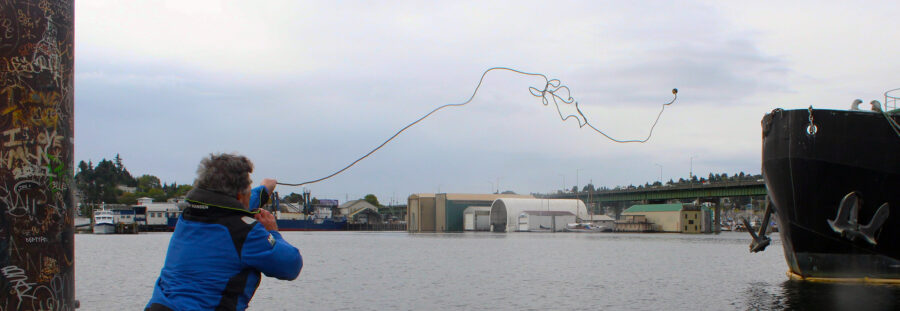
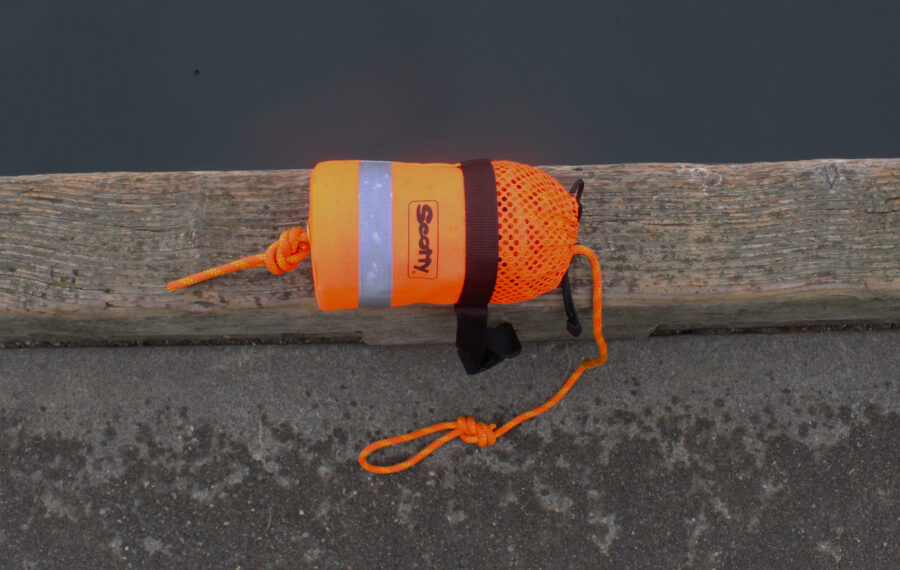
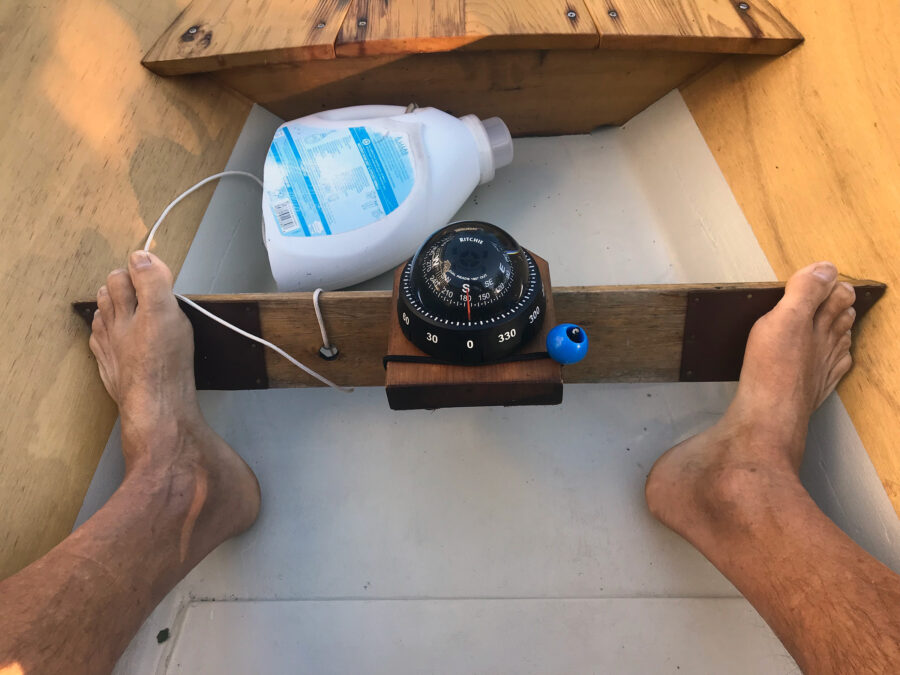
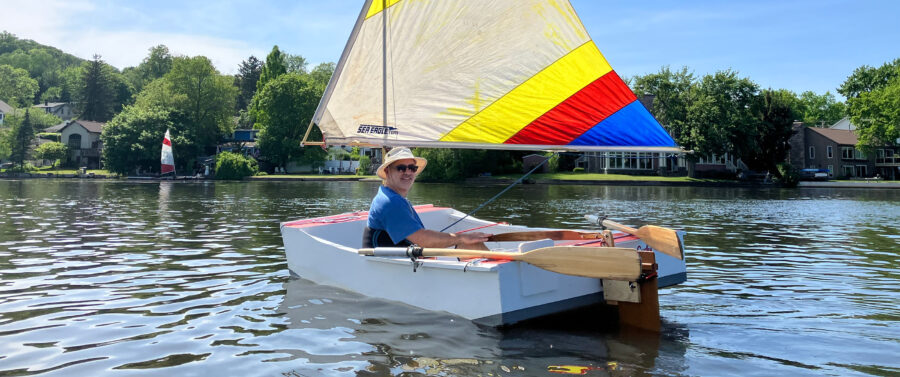
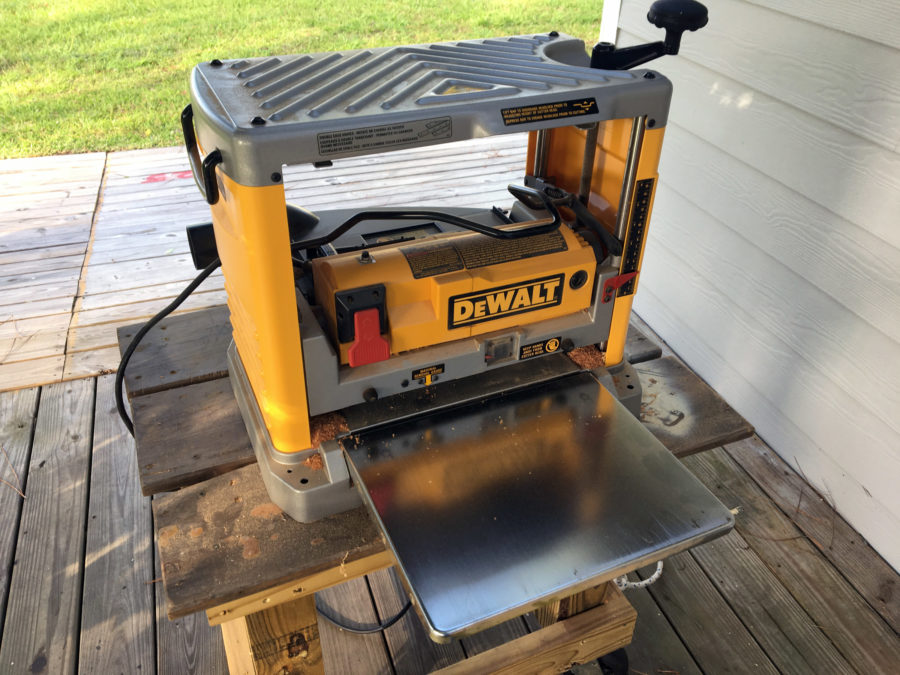
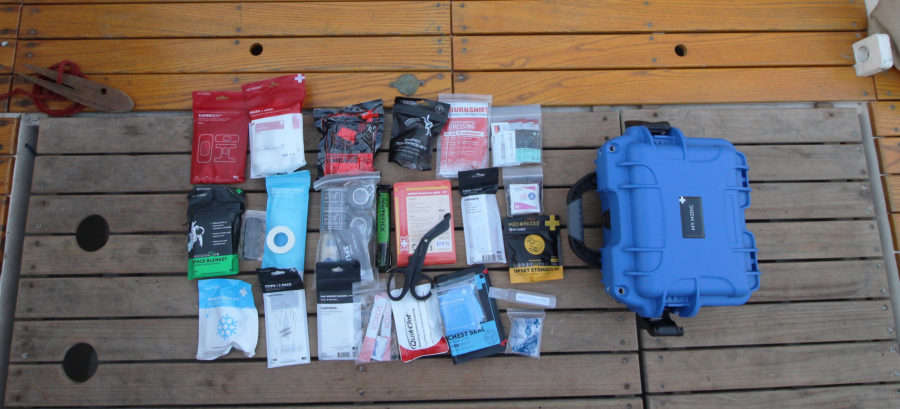
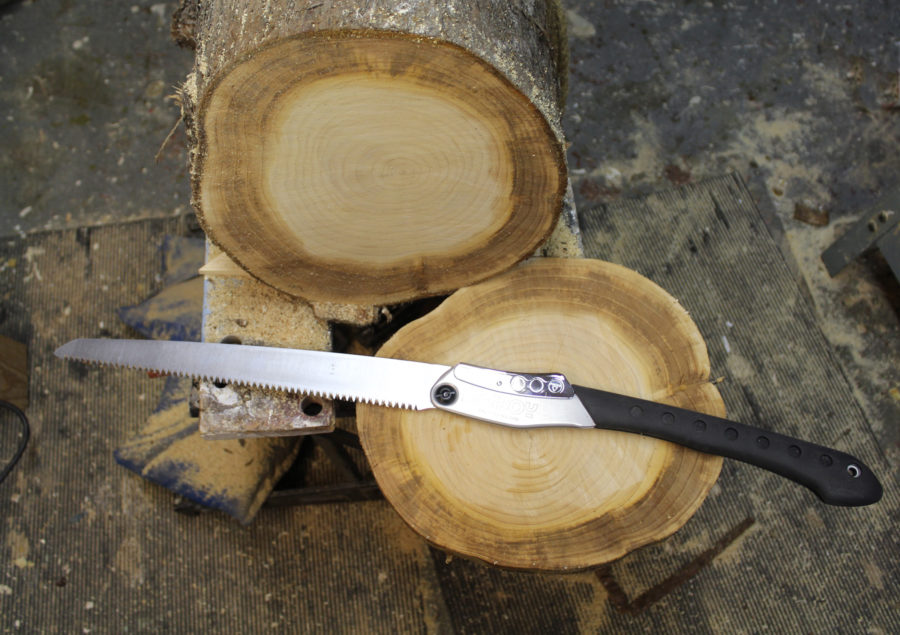
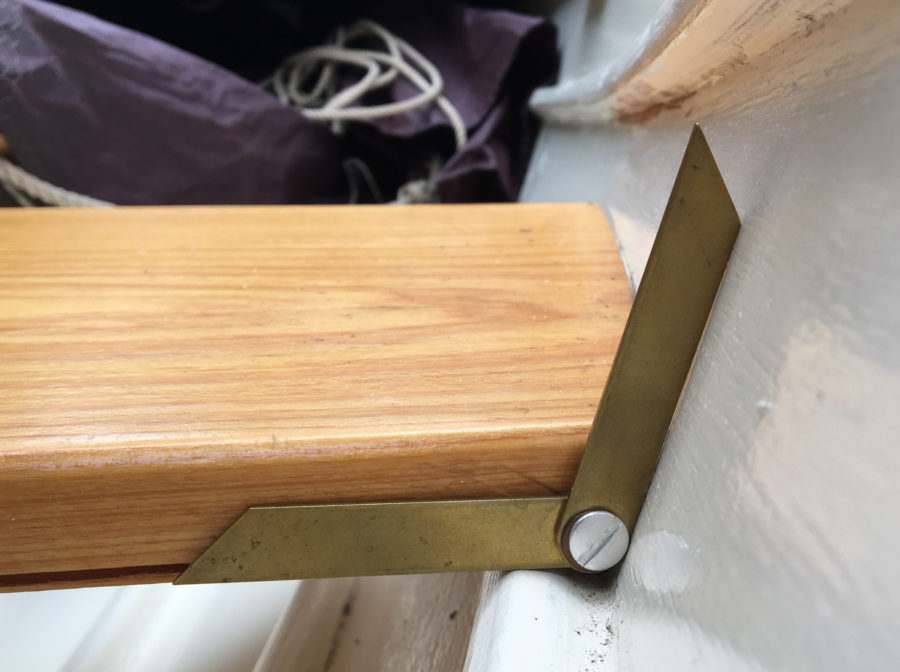
Great article on the rowing compass. Another good use for one besides following a course is rowing in a straight line and not having to crank your neck around every few strokes. I have plenty in stock. Thanks for including me as a source.